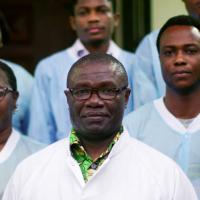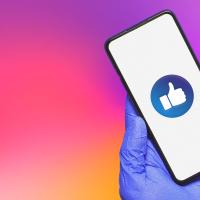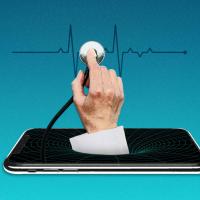The ever-rising costs of medical equipment all too often serve as barriers prohibiting providers from treating patients, but a new approach called “reverse innovation” could finally change that.
Many hospitals in developing countries can’t afford the overpriced, high-tech equipment that’s standard in the U.S. One bottom-up solution is to develop new medical technology that’s much more affordable, but just as effective.
Dr. Thomas Burke, the co-founder of Vayu Global Health, has dedicated his professional career to this concept of reverse innovation. For a fraction of the cost, he and his team of engineers are developing medical equipment and supplies that are typically thousands of dollars. And their out-of-the-box inventions offer the same quality and results.
“Reverse Innovation” Saves Lives in Developing Countries
Dr. Burke has worked for years to help serve communities in need. He’s currently the director of the Global Health Innovation Lab at Massachusetts General Hospital, and prior to that he was a senior faculty member for the Division of International Health and Humanitarian Programs at Brigham and Women’s Hospital.
At his newest venture, Vayu Global Health, doctors and engineers analyze existing medical machinery, breaking down their essential parts and functions, and then find ways to create more affordable options.
To Dr. Burke and his team, reverse innovation means designing solutions that are simpler and cheaper than the status quo. “These techniques are very attractive in poorer countries,” he explains. “I don’t think of it as an alternative, but rather as next-generation devices.”
One of the most influential innovations the team has been working on is a cheaper version of a CPAP machine. Each year, nearly a million infants die globally due to preterm birth complications. One of the leading complications is neonatal respiratory illness, when a premature baby isn’t receiving enough oxygen.
In treating this illness, the CPAP machine is an invaluable resource that can drastically improve a baby’s odds of survival. In fact, studies show that using a CPAP machine can reduce the risk of mortality by 48%, yet these vital machines aren’t present in all medical facilities around the globe.
The standard CPAP device in the U.S. costs thousands of dollars and requires uninterrupted electricity. Some medical providers in developing countries who can’t afford the machine resort to using a plastic bottle filled with water attached to some tubing. While this makeshift solution helps premature babies breath, it can also cause other serious medical complications.
What Vayu Global Health has done is take the expensive CPAP machine and create a simplified model for 50 to 100 times less than similar devices. Dr. Burke’s model, the Vayu Bubble CPAP machine, is now being used in Muhimbili National Hospital in Tanzania, where it’s saved countless lives.
Hospitals in developing countries often have no shortage of medical equipment sent to them by other countries and organizations intended to help improve their circumstances. The problem, however, is that much of this equipment is incredibly complex and requires thorough training, as well as regular maintenance. So when a machine breaks down, it becomes unusable for these facilities.
Along with creating equipment that is much simpler to use and repair, Vayu Global Health works with the healthcare providers to ensure that they’re confident in their ability to do both. And the bubble CPAP machine is only the tip of the iceberg.
The leading cause of maternal death in developing countries is postpartum hemorrhage. The primary treatment for this condition uses a “uterine balloon” which inflates and lines the walls of the uterus to stop bleeding. It’s an incredibly effective treatment but, just like in the case of the CPAP, its high cost often prevents providers from accessing the technology.
Dr. Burke and his team have created a solution for this, as well. Their invention uses easily accessed materials and is fashioned with a catheter and a condom. It has already been put through 28 clinical trials and is fully approved for use. “In India, instead of $400 it costs $3.50 and is now available in most countries in the world,” Dr. Burke says.
Bringing Equity to Healthcare
Although the solutions that Dr. Burke and Vayu create are designed to serve overlooked populations that have been priced out of health care, there’s no reason why these more affordable technologies can’t also benefit the U.S. and other developed nations.
America’s healthcare system is often seen as a business seeking to profit, rather than a service seeking to protect. Vayu Global Health hopes to help change that. The foundation is dedicated to bringing its innovative medical devices to U.S. healthcare facilities and is beginning to make headway with products already being used in remote hospitals across the country.
All of these efforts are creating equity in an industry that drastically needs it. Access to affordable health care should be a basic human right regardless of a person’s circumstances, and reverse innovation might just help bring that to fruition.
For more interesting news about the people and ideas that are changing our world, subscribe to Freethink.


